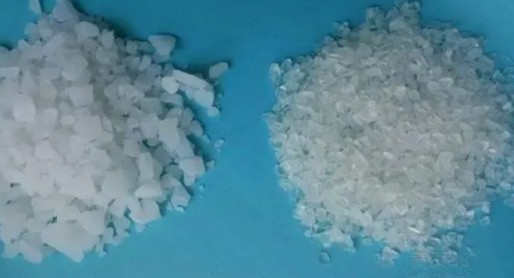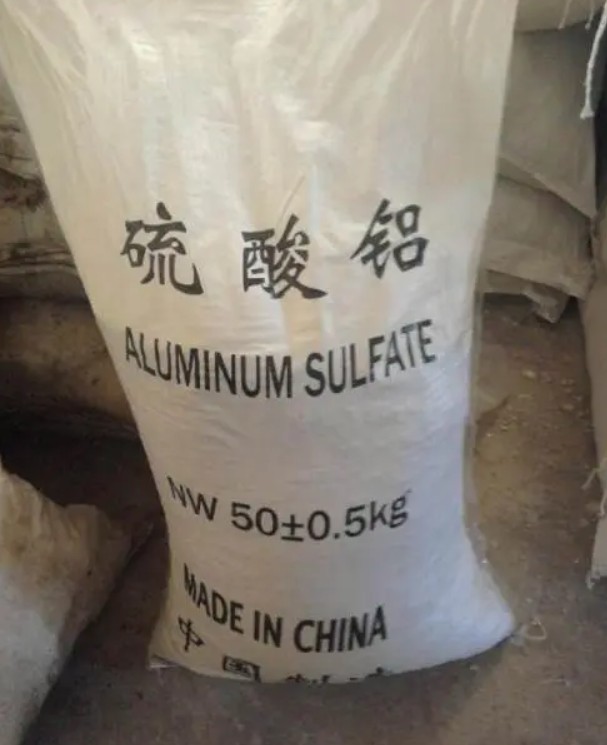Characteristics and uses of aluminum sulfate
|
Product Name |
|
|
Appearance and shape |
Hygroscopic white flakes, granules, or lumps |
|
Melting point |
770 °C |
|
Solubility |
Soluble in water, insoluble in ethanol, etc. |
|
Picture |
 |
The use of aluminum sulfate
No.1
Used as a paper sizing agent in the paper industry to enhance paper's water-resistance and impermeability. As a precipitant for rosin gum, wax emulsion, and other rubber materials.
No.2
It Used as a flocculant in the treatment of drinking water, industrial water, and industrial wastewater. After aluminum sulfate is added to the water, it can form colloidal aluminum hydroxide flakes that can adsorb and precipitate bacteria, colloids, and other suspended solids. Used in drinking water treatment to control the color and taste of water.
No.3
Used as a turbid water purifier, as a precipitant, fixing agent, filler, etc. Used as an antiperspirant cosmetic raw material (astringent) in cosmetics.
No.4
In the fire protection industry, it is combined with baking soda and a foaming agent to form a foam fire extinguishing agent.
No.5
Analytical reagents, mordants, tanning agents, grease decoloring agents, wood preservatives.
No.6
Stabilizers for albumin pasteurization (including liquid or frozen whole eggs, egg whites, or egg yolks).
No.7
It can be used as raw material for the manufacture of artificial gemstones, high-grade ammonium alum, and other aluminates.
No.8
In the dye industry, it is used as a precipitant in the production of chrome yellow and lake dyes, and at the same time, it plays a role in fixing and filling agents.
No.9
Used as an effective crosslinking agent for animal glue and can increase the viscosity of animal glue. The curing agent of urea-formaldehyde adhesive, the curing speed of 20% aqueous solution is faster. It can also be used as a decolorizing and deodorizing agent for petroleum.
Storage and transportation characteristics of aluminum sulfate
Store in a cool, dry, well-ventilated warehouse, away from fire and heat sources, and pay attention to moisture. It was transported as general chemicals, protected from rain, moisture, and sun exposure during transportation.

What is used in the wastewater aluminum sulfate crystallization process?
Aluminum sulfate is generally used in papermaking or as a flocculant in industrial wastewater treatment.
The standard aluminum sulfate evaporation crystallization technology uses a single-effect evaporator for atmospheric evaporation and concentration. The system has low evaporation intensity, high operating costs, and a poor operating environment.
What are the evaporation crystallization technologies of aluminum sulfate? This needs to be selected according to the chemical properties of aluminum sulfate.
Aluminum sulfate chemical properties: anhydrous and octahydrate. The anhydrate is a colorless orthorhombic crystal. It is soluble in water, and the aqueous solution is acidic and slightly soluble in ethanol. The solubility in water increases with increasing temperature.
1. Selection of wastewater evaporative crystallization technology of aluminum sulfate
Because of the characteristics of aluminum sulfate, a forced-circulation three-effect evaporation process is selected. This process has high heat transfer coefficient characteristics, high evaporation intensity, easy operation, and reasonable energy consumption.
The continuous feeding, continuous discharging, and countercurrent evaporation process are adopted to discharge the concentrated liquid with high concentration at the first effect and high temperature, ensuring the discharging concentration of aluminum sulfate and preventing the precipitation of solid aluminum sulfate due to low-temperature discharging.
2.aluminum sulfate wastewater evaporation and crystallization process
1) The dilute solution enters the three-effect evaporator first and then enters the two-effect and one-effect evaporators in turn after evaporation. The concentrated liquid is discharged from the first effect and then enters the subsequent cooling and flaking section.
2) The raw steam enters the heating chamber of the first-effect evaporator in sequence, and the condensed water is discharged after heat exchange and condensation and can be returned to the boiler for use. The secondary steam generated by the evaporation of the first-effect separation chamber enters the second-effect heating chamber. The condensate of the condensation heat exchange enters the third effect and is mixed with the secondary steam condensate of the second effect and discharged. The secondary steam evaporated by the three-effect is condensed by the condenser and then discharged for the material chemical process. The use of condensed hydrating material can further reduce the content of calcium and magnesium ions in the solution and reduce the scaling of the pipe wall.
3) Due to the strong corrosiveness of aluminum sulfate solution, to improve the equipment's service life, the evaporator's main material is made of titanium, and the negative pressure low-temperature evaporation is adopted, which can effectively reduce the corrosion of the equipment.